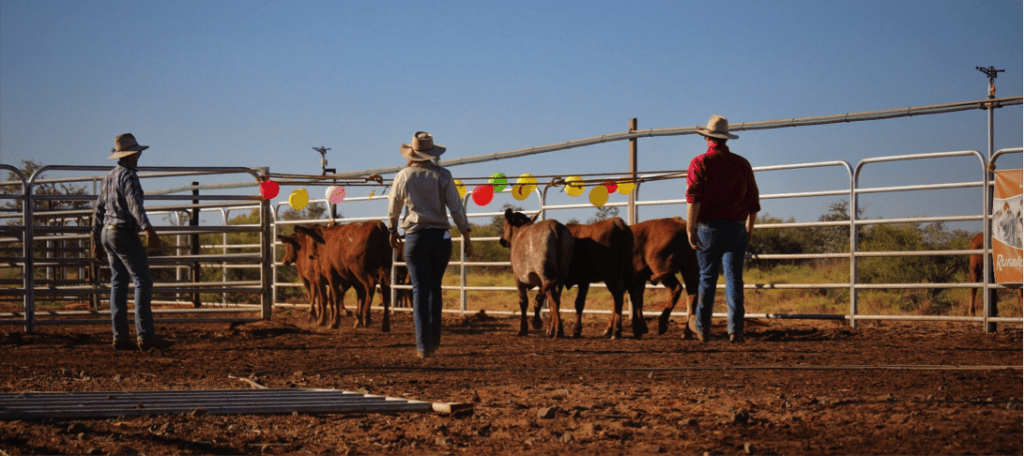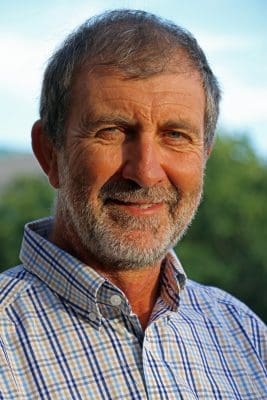THE hope of those driving the red meat industry restructure process is that industry stakeholders from all sectors will now provide feedback on the restructure model identified in the independent MoU review white paper before the industry finalises a restructure position later this year to put to Government.
It hasn’t taken long for a leaked draft version of the report circulated in recent days to already get people talking.
Significant change inevitably sparks strong reactions and comments to Beef Central from stakeholders ranging from the production to processing sectors have been predictably mixed so far.
For its part, the peak industry council representing Australian cattle producers, the Cattle Council of Australia, says it is now up to all producers to have a good look at what the Taskforce has recommended and think about what is the best path forward.
“We’re going to listen, particularly to our producers but to the whole of industry too,” CCA president Tony Hegarty told Beef Central today.
He said the red meat industry restructure proposed in the white paper document would not affect Cattle Council’s own restructure plans, through which it is moving to develop a fully directly elected board.
While the White Paper proposal would see payments from the Red Meat Industry Fund to all peak industry councils including Cattle Council of Australia start to be wound back in about two year’s time, he said CCA was looking to broaden revenue from different sources in future.
“There are still going to be possibilities of roles within industry doing other things that earn money in other ways and help to fund us,” Mr Hegarty said.
“Obviously representation is one form of funding but delivery of services is another and projects is another, there are possibilities of other funding sources.”
He said the white paper made no reference to the findings of an earlier comprehensive report commissioned by RMAC and conducted by the Australian Farm Institute at the request of then Agriculture Minister Barnaby Joyce looking into agricultural representation.
“I think industry needs to have a good look at (the white paper) and determine where it needs to go and what is important and what is not,” he said.
“We will do a lot of listening to what people have to say and work our way through what is needed and what should go ahead.”
A return to the old AMLC?
Some have already likened the wide-ranging reform proposed in the white paper as a return to the days when an ‘all powerful’ Australian Meat & Livestock Corporation and supporting Meat Research Corporation structure, which preceded the 1997 overhaul that created the current Meat & Livestock Australia based structure, ruled the industry.
Others have drawn attention to the fact that not so long ago, two Senate inquiries and an ACCC study recommended that the Red Meat Advisory Council be disbanded. Now a review commissioned by RMAC with red meat industry funds has led to a restructure recommendation that not only creates a new RMAC-like body, but a much stronger version that will control all industry levies, will gain whole of supply chain policy setting powers, and have the ability to sanction or cut red meat funding to red meat peak councils seen to be not upholding their responsibilities to the MoU or Meat Industry Strategic Plan.
Suggestions that the process was not independent and that this outcome represents a ‘takeover by RMAC’ have been dismissed as rubbish by RMAC chair Don Mackay (see separate article).
Review taskforce chair Jim Varghese who made the final recommendation which appears in the white paper said the proposed restructure provides clear line of sight between industry priorities and industry funding, with a single industry voice to set strategy and drive culture and behaviour change across the industry.
“I’d use an old phrase that former Prime Minister John Howard used – this is an opportunity to engage in good competition, rather than destructive competition with each other,” he told Beef Central.
“My strong recommendation to all stakeholders is here is a once in a generation opportunity to affect a change that will make this industry very proactive, very prosperous, and on the front foot with all the issues of the future – climate change, animal activism or alternative meat products.”
Former AMH boss John Gunthorpe, who a few years ago formed a grassfed cattle producer group under the title Australian Cattle Industry Council, said the white paper restructure pathway ignores the democratic rights of levy payers “to own the body advocating for our businesses and to elect those representing the interests of levy payers”.
He said that by perpetuating the Peak Industry Council model, and giving PICs the opportunity to appoint their own director to the new powerful Red Meat Australia, levy paying producers who were not paying members of Cattle Council of Australia were left out.
“Levy payers whether grass-fed cattle producers, processors, lot feeders or live exporters are forgotten in this model and are expected to sit back and watch the machinations of the appointed representatives as they deal with the issues that they consider important for our industries.
“Red Meat Australia must be owned by the levy payers and its directors elected by the levy payers.
“For too long our rural businesses have suffered from the inept and at times catastrophic decision making by those nominated to PICs and RMAC.”
He said past Senate enquiries established the need for democratic representation and ownership of the bodies established to advocate for our industry.
“We call on the Federal Minister for Agriculture to ensure cattle producers, processors, lot feeders and live exporters are treated fairly in this restructure and are the members of Red Meat Australia and elect its directors by open ballot.”
The Australian Beef Association described the identified restructure pathway as ‘an attempt by the old guard to maintain control of the industry agenda and secure the receipt of all levies paid’ across all red meat sectors under a ‘better financed rebadged RMAC’.
ABA chief executive David Byard said the industry needed to develop an automated system of identifying all levy payers and their levy payments to underpin future industry representation and voting, as used in the wool industry for AWI elections, and as recommended by a Senate Committee inquiry in 2014, but the industry continued to drag its feet on the proposal.
The disagreements between red meat industry sectors over the 2011 cattle welfare crisis in Indonesia demonstrated the difficulties of trying to bring all red meat industry groups together in a single body.
“Surely it will be much simpler to duplicate what the processors and live shippers did in 1998 where they formed their own service delivery company and the funds flowing from levies went their own organisation with complete control over how that money was spent,” Mr Byard wrote in an opinion piece circulated earlier this week.



Another whitewash and willful ignorance of the key issues by the established players. Give cattle producers (i.e – those that calve the cows) a directly elected body, or get rid of the compulsory levy. No Taxation without DIRECT Representation.
Tony, I understand the report you refer to is “Improving the sustainability of red meat and livestock peak councils” and was prepared by Mick Keogh at the Australian Farm Institute in November 2016. The intellectual property of the report is held by RMAC and is not published. So all levy payers can have a full and frank look into the current White Paper from RMAC on this subject, it should be made available unless it contains recommendations you do not want levy payers to read.
Tony Hegarty refers above to a comprehensive report commissioned by RMCA and prepared by the Australian Farm Institute for the then Minister of Agriculture looking into agriculture representation. He comments that the current report makes no reference to it. Could we ask that Tony, in promoting a close look at the current report and providing producers with the opportunity to have a good look at the current report, provide a link to the earlier report so we might understand what it contains? How does it vary from the current report? Obviously Tony has read it and so it should be available to all grass-fed cattle producers.
Australian Cattle Industry Council